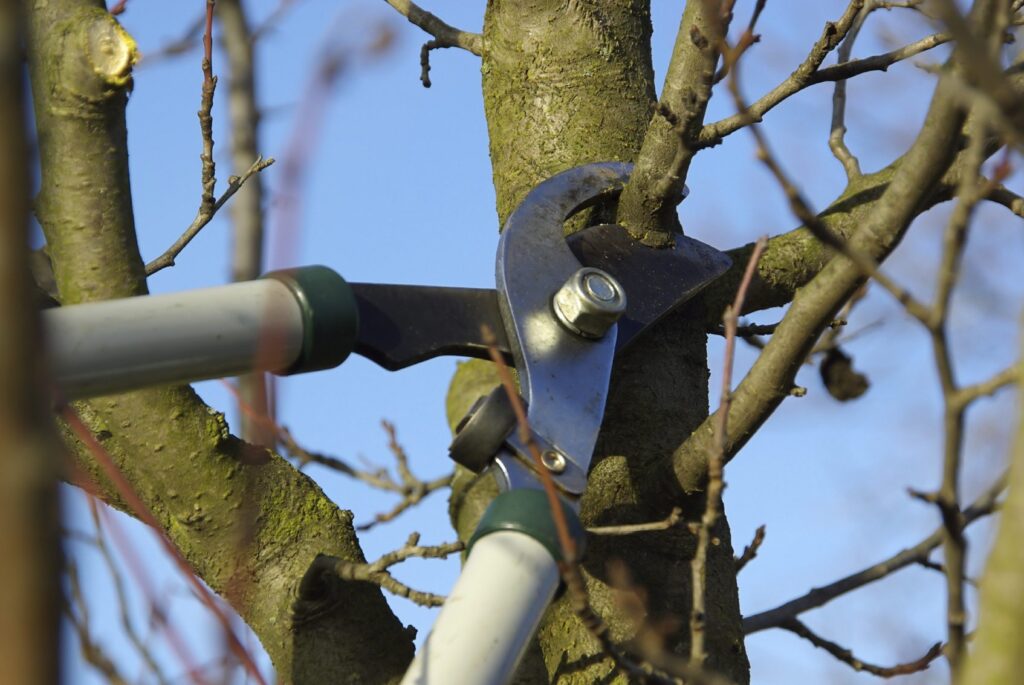[ad_1]
There are several types of tree loppers on the market, including Ratcheting, Anvil, and Bypass Loppers. However, which one is right for you? In this article, we’ll explore these different types of loppers to help you choose the right one for your needs. We’ll also cover some of the best uses for tree loppers.
Bypass Loppers
There are many benefits to using a bypass tree lopper. These tools are lightweight and ergonomic. They feature a non-slip handle, which makes them easy to use for extended periods. They are also backed by a limited lifetime warranty. They are a great addition to any garden.
Bypass loppers consist of two blades that slide past each other, much like scissors. This design allows for a clean cut on live wood and allows the plant to heal more quickly. The downside is that these loppers can jam easily, particularly when cutting dead branches. If you’re not careful, you can damage the blade.
When purchasing a bypass tree lopper, make sure you check the size and weight. Make sure the weight is comfortable for you to use. Bypass loppers can vary from 3 to 5 pounds. The blades are made of steel, and the handles are made of aluminum or fiberglass. Some models have additional features, such as shock absorbing bumpers and contoured handles.
Anvil-style loppers
Anvil-style tree loppers are a versatile tool for cutting trees. They have one blade that is made from a single piece of high-carbon steel, providing excellent cutting power with minimal effort from the user. Their blades also resist the sticky sap and make clean cuts. Anvil-style loppers are available in lightweight and heavyweight versions.
Anvil-style loppers are heavier and longer than traditional versions, making them more convenient for cutting higher branches. However, they are also bigger and heavier, and you might end up with arm fatigue after a long day of cutting. Additionally, long loppers do not have a telescoping handle and are not as effective for cutting thicker branches or softer greenery. In addition, they can be cumbersome to use, weighing as much as five pounds. However, you can avoid arm fatigue and wrist pain by using loppers with padded handles.
Anvil-style tree loppers are also available in heavy-duty versions for cutting larger branches. Using these tools properly will make your work much easier.
Ratcheting loppers
One of the benefits of ratcheting loppers for tree pruning is their ease of use. They have non-slip handles and slightly inward angles that make them easier to grip and operate. Additionally, they feature built-in shock absorbers to help protect your wrists and arms. This makes them perfect for intensive landscaping jobs.
Ratcheting loppers are not for beginners, and can take a bit of practice. These loppers’ blades are sharpened to prevent buildup and prevent the blades from getting dull. They should also be used with a set of instructions or step-by-step guidance. To use a ratcheting lopper, start by spreading the handles to fit the branch you’re cutting. Always use the cutting edge deep within the blades, not just the top of the branch. If you use the blades too shallowly, you’ll end up dulling the blades or overworking your arms.
Alternatively, you can choose from anvil loppers, which are designed to slice through branches up to two inches thick. These loppers also have Teflon blades, so you won’t have to worry about sticky sap on your tools. These loppers are also very easy to clean. They can even be used on trees with dense interior canopy.
WOLF-Garten(r) Tree Lopper
The WOLF-Garten Tree Lopper is a powerful tree lopper with an extendable pole that can reach as long as four metres. The interlocken(r) handle and click system allows you to easily connect and disconnect the lopper tool head. The system also allows you to prevent the tool from top-heaving a pole.
The WOLF-Garten Tree Lopper is ideal for professional and home use. Its sliding anvil lopper eliminates kickback, and its 4:1 pulley ratio makes it easy to work in tall trees. Moreover, the blades are non-stick coated, so they are resistant to rust and damage.
Tabor Tree Loppers
The Tabor Tree Lopper is an effective tool for cutting large branches and deadwood. Its long handle reaches up to thirty inches and offers excellent leverage for cutting thick branches. It is made of high carbon steel and features a rust-resistant coating. It weighs 3.6 pounds and can be used overhead. It comes with a safety lock for added safety.
The telescopic handles of Tabor Tree Loppers offer an extended reach without the need for a ladder. However, longer loppers are heavier and may result in arm fatigue. Another good option is the Felco Tree Lopper, which features a heavy-duty looper that pulls the branch to the center of the cutting head for a clean cut.
[ad_2]










